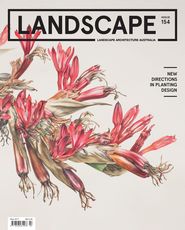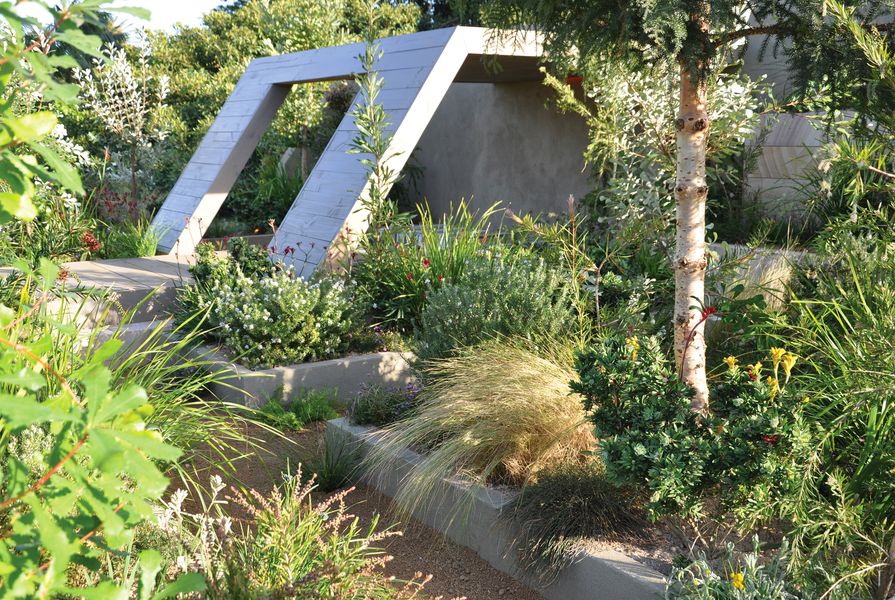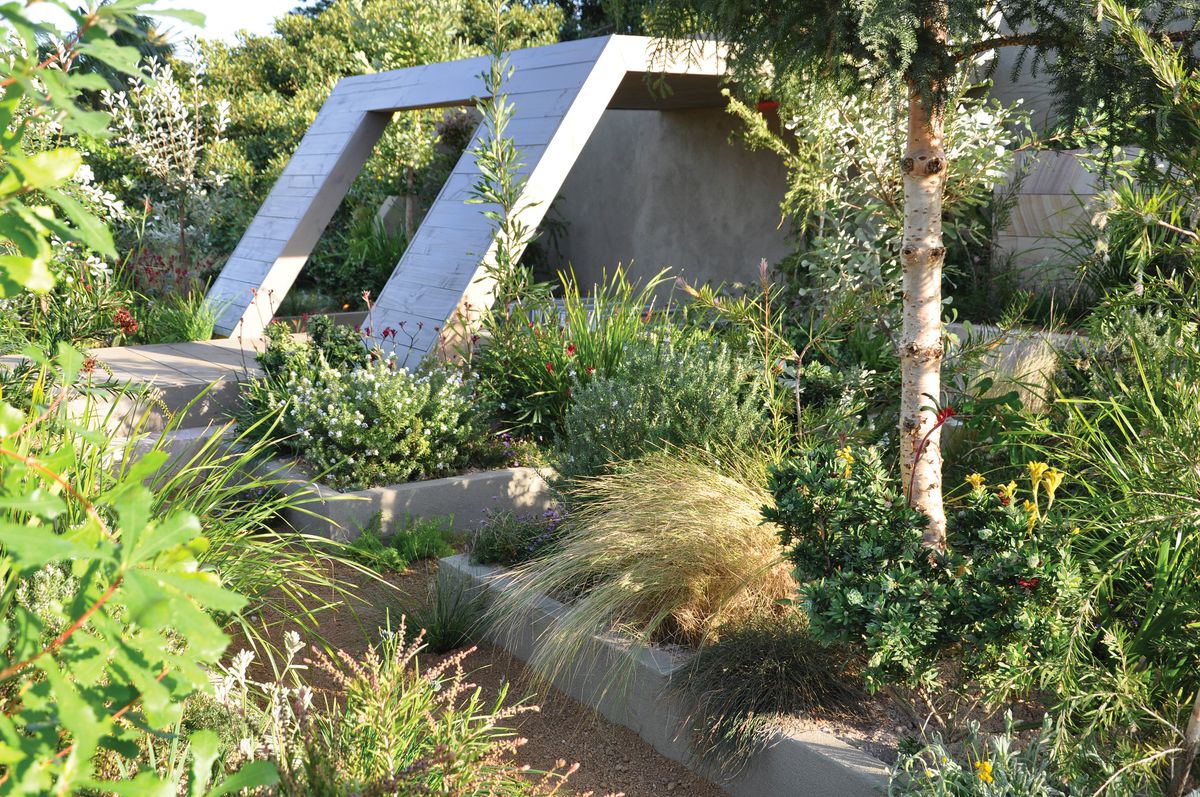I look from the fifth-floor office window and wonder at the human thinking that produces a landscape of mown grass, mass-planted Lomandra spp. and a scattering of identical street trees interspersed with roads, concrete and buildings. What is supposed to live there? I drive through the suburban streets planted with endless Pyrus spp. in all shapes and sizes. When did we decide that landscapes needed to be tidied, with grass mown and nature dominated? And why?
In the bustle and rush of getting landscape proj ects designed, it might seem expedient to stick to a limited palette of known plant performers. The result is often a bit boring, but mass plantings of reliable plants give the best chance of a predictable outcome with minimum effort. Some clients even demand this approach with requests for assurances from the designer about the reliability of the plant material or a requirement to only use plants from their approved list. The unfortunate result can be a green desert, fit only for occupation by animal species in unbalanced populations. Is this dumbing down of planting design a result of the well-targetted marketing campaigns of some plant breeders, designer laziness, clients losing confidence that landscape architects know about plants or all of the above? When planting design becomes all about making geometric patterns with plants, with no consideration of their environmental services and other benefits, I suggest that we have lost the plot.
The international plant breeder’s rights (PBR) system was introduced in Australia in 1987. It aims to encourage plant breeding and innovation by protecting the rights of the breeder of a registered plant variety for twenty to twenty-five years (depending on the species) and providing an opportunity for financial benefit. The result has been a flood of new plant varieties, which have been incorporated in large numbers into our landscapes. Every specimen in a mass planting of a PBR plant is genetically identical since the PBR system requires that each plant is a clone of the breeder’s original selection.
While using PBR varieties is convenient for designers looking for predictable performance from their soft landscape component, all those plants are occupying niches that could otherwise be used by plants with a huge variety of genotypes. If the PBR variety also has sterile seed, which is good for reducing weed spread, then the plant has completely lost the opportunity to adapt genetically to changing conditions. The fundamental problem here is that resilience and adaptation in natural systems is underpinned by diversity. At the very time when we need diversity to combat new pests and diseases, we are enthusiastically implementing the opposite. We need genetic diversity of plant material for climate adaptation. Landscape architects are in a good position to do something about this.
The catch is that increasing genetic diversity in landscape planting requires different design approaches. Conventional mass planting in rows of equally spaced specimens can look a bit tragic when there is more variability in the plant material. Rather than achieving uniformity, increased genetic diversity offers chaos and exciting possibilities for designers to explore – a glorious riot of form, texture and colour. Along with this comes the opportunity to make more interesting places with stronger connections to nature. We have many examples from which to draw inspiration and there are, of course, contemporary Australian designers who embrace plant diversity in their work. Paul Thompson and Jim Fogarty immediately spring to mind. Both of them produce work that is characterized by an extensive understanding of plant material and opportunities for plants to move into the space where another has failed without spoiling the design.
For some years I have found the Sustainable Sites Initiative and its SITES tool useful when thinking about ways to design landscapes more sustainably. For planting design, SITES encourages plant selection to suit existing soils, the use of endemic plant species and local food production. My experience is that this approach delivers landscapes with a strong sense of place and that support a wide range of fauna. We also have an emerging opportunity to work with our first Australians to expand the use of endemic plant species as food. Sourcing plants can be a challenge since we have lost many local, specialist nurseries with the industrialization and nationalization of plant supply. It is increasingly likely that only a small range of well-known plants with limited genetic diversity will be commercially available unless designers create a demand for more diversity and local species.
These ideas are not new but are in need of revisiting to help our urban populations to reconnect with nature, understand the rich natural heritage of our land and begin to adapt to the changing conditions.
Source

Practice
Published online: 22 Aug 2017
Words:
Jennie Curtis
Images:
Jim Fogarty
Issue
Landscape Architecture Australia, May 2017












